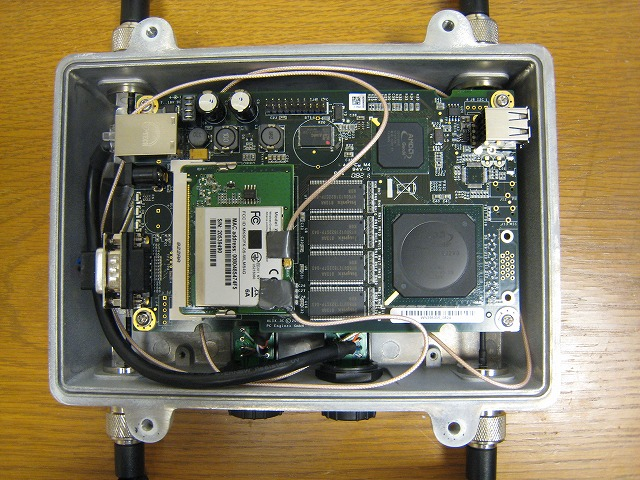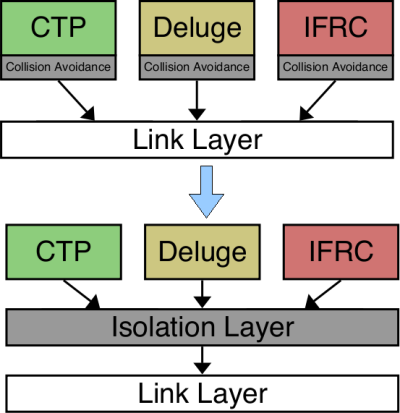|
||||
Introduction:A wireless mesh network is a collection of wireless nodes that can route data within the network over multiple hops, without needing a wired connection or a central co-ordinator. Nodes can co-operatively route each others packets. A gateway, i.e. a node that connects both to the wireless mesh network and the wired infrastructure network, can extend the mesh to provide infrastructure connectivity at each wireless node.The Stanford Wireless Access Network (SWAN) project aims to study and implement existing techniques for setting up mesh networks and research into extending those techniques for improved performance. The project currently consists of a 50 wireless access point indoor testbed deployed in the Gates computer science and Packard electrical engineering buildings of Stanford university. Using this testbed, we have run extensive experiments on the current state of the art routing protocol for mesh networks, Srcr. Experiments have shown that although Srcr is able to form routes and route data in the network, the performance falls below what would be expected of a production network. Especially with multiple streams active, delivery reliability and performance are unacceptable for an office environment. Further, experiments on SWAN also show that existing rate selection algorithms fail miserably in mesh networks. A lot of the times, self interference can lead to bad link estimates and cause transmitters to switch to the lowest transmission rate, thus wasting valuable channel time and reducing throughput. |
||||
SWAN NodesWe use two types of hardware in the SWAN network to offer different capabilities and price points:ALIX board based nodes: These nodes use ALIX 3C2 boards with an AMD Geode processor, 1 CF card slot, 2 minipci slots and 1 ethernet slot. Each node has 2 minipci Atheros 5212 11b/g cards connected to them with 2 antennas connected to each card. The nodes are powered using an off-the-shelf passive POE adapter. These nodes cost approximately $250 each to build. These nodes are more than sufficient for most mesh networking needs, but are insufficient for very cpu intensive protocols like those employing network coding. Currently, about 40 of these nodes have been deployed in the Gates and Packard buildings. Shuttle PC based nodes: These nodes use shuttle PCs with Intel Dual core processors and 100G of hard disk space. Each shuttle PC is equipped with one single antenna PCI WiFi card based on the Atheros 5212 802.11 b/g chipset. Shuttles have much more compute power compared to the ALIX based nodes and allow us to run cpu intensive experiments like network coding. These nodes are costlier to build and also have a tendency to occasionally overheat. Currently, about 20 of these nodes have been deployed in the Gates building. |
||||
SWAN networkThe layout for different floors and buildings for the SWAN network (only for the ALIX based nodes) can be found below:Gates computer science building Gates Basement Gates First Floor Gates Second Floor Gates Third Floor Gates Fourth Floor Gates Fifth Floor Packard electrical engineering building Packard Building AP Map |
||||
Directions of researchRouting protocols: Develop mesh routing protocols to increase reliability in terms of end-to-end packet delivery, while reducing route discovery and packet delivery delays.Fairness Develop techniques for fair use of the wireless channel between nodes and among flows within nodes. We have done similar work in the sensor network domain~\cite{choi09fwp} and plan on extending that work to 802.11 mesh networks. Link estimation Develop link estimators that respond quickly to channel changes but are stable enough to let the routing topology converge. Adaptive parameter selection Develop algorithms for adaptively selecting parameters like rate and transmit power based on link estimates. This can reduce in-network interference, while maintaining high performance. Use existing literature from theory on network utility maximization and possibly other optimization schemes. |
||||
Publications:
|


